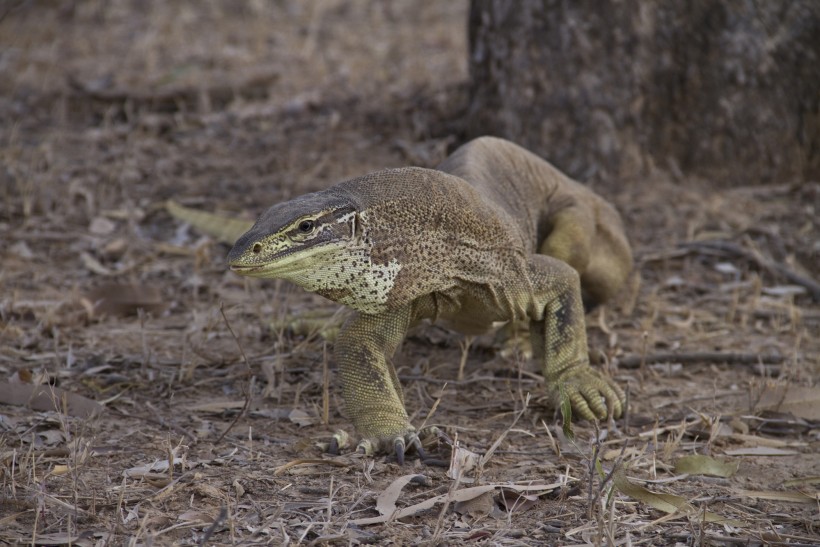
by Barbara | Feb 23, 2016 | Blog |
Access the original blog post written by Barbara for the Save Our Seas Foundation
here‘So what do you do?’
‘I’m a biologist. I work with sawfish.’
‘Starfish, really? How exciting!’
‘No, no, SAWFISH! You know, its body looks like a shark’s, but it also has a long saw with teeth down the sides! Do you know what I mean?’
This is a conversation I have had many times. Although I could blame this little misunderstanding on the fact that my native tongue is German, over the 12 years that I have lived in Queensland and worked with sawfish, I have come to realise that there is also another, more important reason.
Many Queenslanders have never heard of sawfish. Even fewer people are aware of the fact that northern Australia, including Far North Queensland and the Cape York Peninsula, is probably the last global stronghold for four species of sawfish. This phenomenon may be explained by the low population density and little tourism of the Cape York region. Another reason could be that the rivers and coastal regions of Cape York, which sawfish inhabit, have very poor visibility and are a prime habitat of saltwater crocodiles. Unless you accidentally catch a sawfish in your recreational fishing gear, these creatures are likely to remain hidden from you during your visit to Cape York.
For these reasons, I started thinking about setting up an organisation here in Cairns that would actively engage the public in research on the elasmobranch fauna of Far North Queensland and the Cape York region. In 2014 I embarked on a long, unmapped and rocky road through bureaucracy that greatly resembled the unsealed roads leading to our remote research sites. At the beginning of 2015, Sharks and Rays Australia (SARA) was finally incorporated and early in that year we signed a partial sponsorship deal with Polycraft Australia and Mercury for a small research vessel.
During the set-up phase, it became clear that the involvement of Indigenous Rangers in the ecological surveys run by SARA would be crucial. Over the past decade, the strong connection of Indigenous groups to their country has been formally recognised under the Native Title system, which provides Indigenous groups with exclusive or non-exclusive rights over their land. Most of the Cape York territory is now covered by a patchwork of Native Title rights. There, many Aboriginal Land Councils now run Indigenous Ranger programmes to manage their country. Indigenous Ranger groups also run Junior Ranger programmes to pass both ecological and traditional knowledge on to the next generation.
In September 2015, while SARA’s research vessel was still caught up in the process of commercial registration and therefore not yet launched, we decided to embark on our first trip to Cape York – without a boat. But even though I was impatient to begin the actual research – from a boat – Cape York did not disappoint.
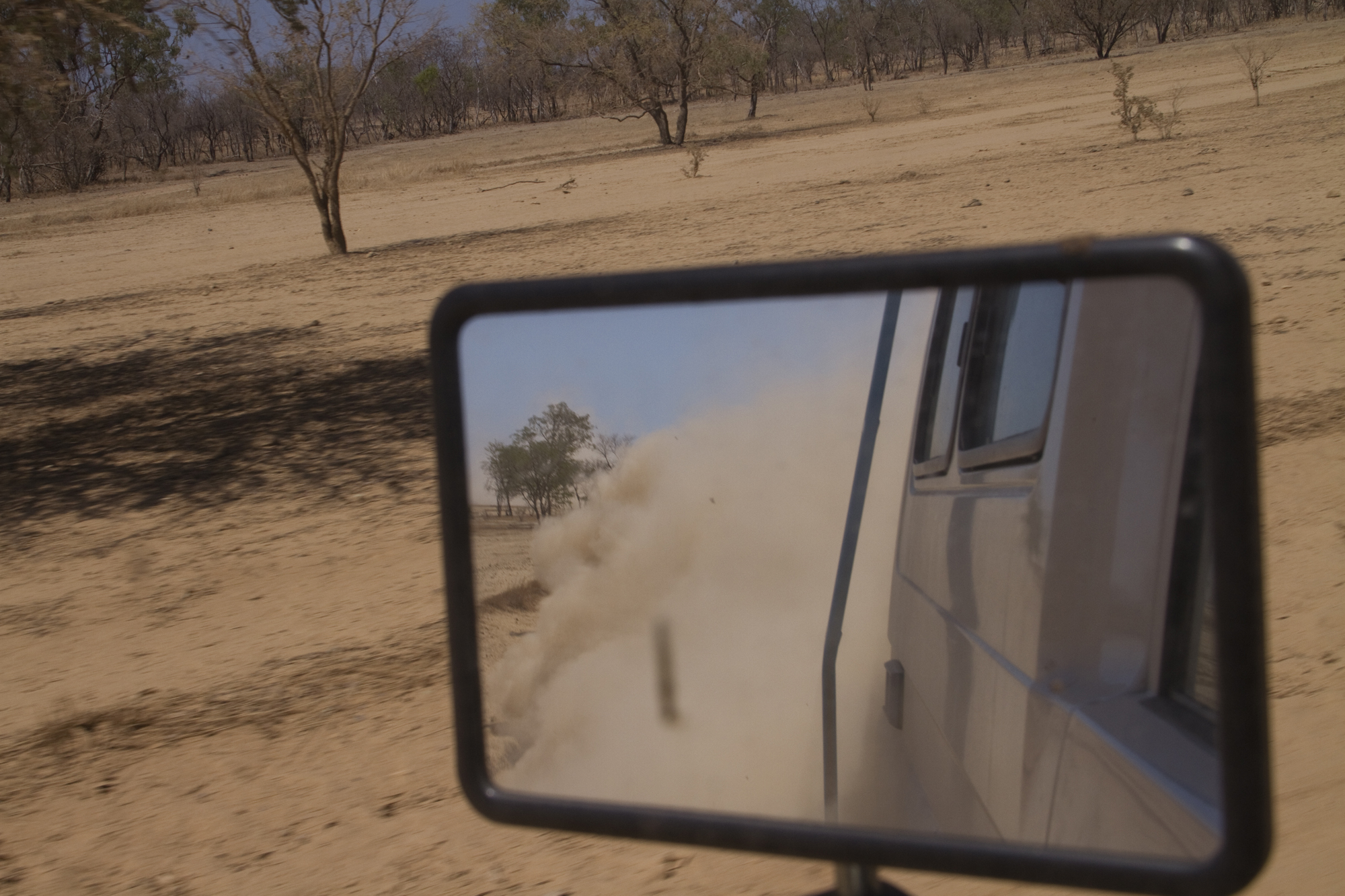
Kicking up the dust on the way to Kowanyama, Cape York Peninsula. Most roads on the Cape York Peninsula are unsealed.
We were heading to Kowanyama, the largest Indigenous Community on Cape York. The community is located on the west coast of the cape, on the eastern side of the Gulf of Carpentaria, and is home to five different Indigenous language groups. The Indigenous Rangers of the Kowanyama Aboriginal Land Council are actively conducting ecological surveys and habitat restoration programmes. The drive to Kowanyama from Cairns takes about 12 hours, as most of the 600 kilometres of roads are unsealed. Along the way, we encountered lots of the unique wildlife of the Australian outback.
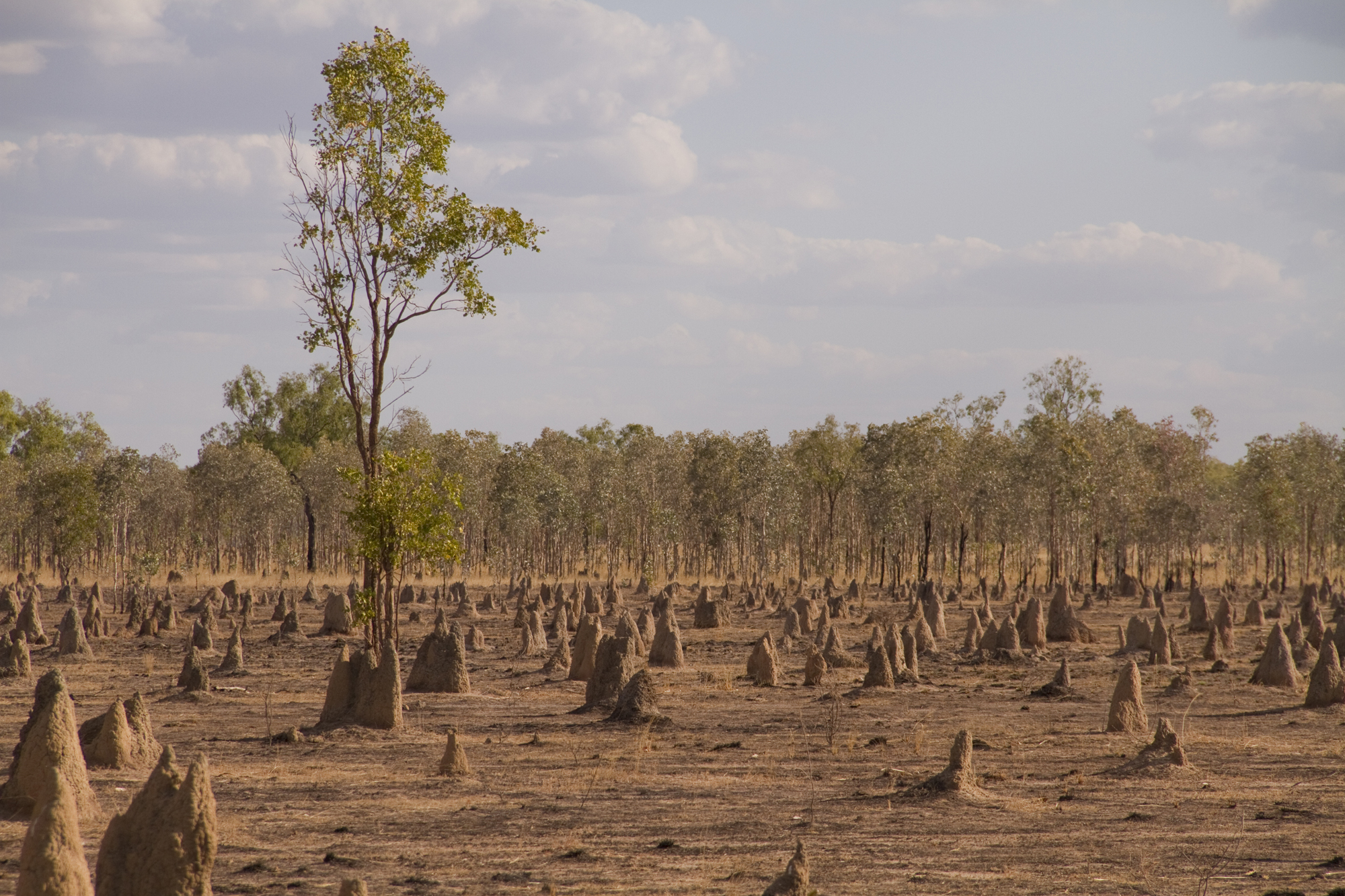
Termite mounds cover the dry grass landscapes of Cape York.

The yellow spotted monitor Varanus panoptes is widely distributed across northern Australia. It can attain a total length of 1.4 metres.
The first night, we camped along the Mitchell River, about 250 kilometres inland of the Coral Sea in the east and the Gulf of Carpentaria in the west. Even here, at this dry campsite in the middle of the bush, we were reminded of the presence of sharks and rays in the rivers of Cape York. Next to our camping spot, we found the carcass of what was probably a juvenile bull shark hanging in a tree. With the fillets missing, it looked as if it had been left behind by recreational fishermen. Its presence in such a dry region made us marvel at the ecological adaptations of sharks and rays.
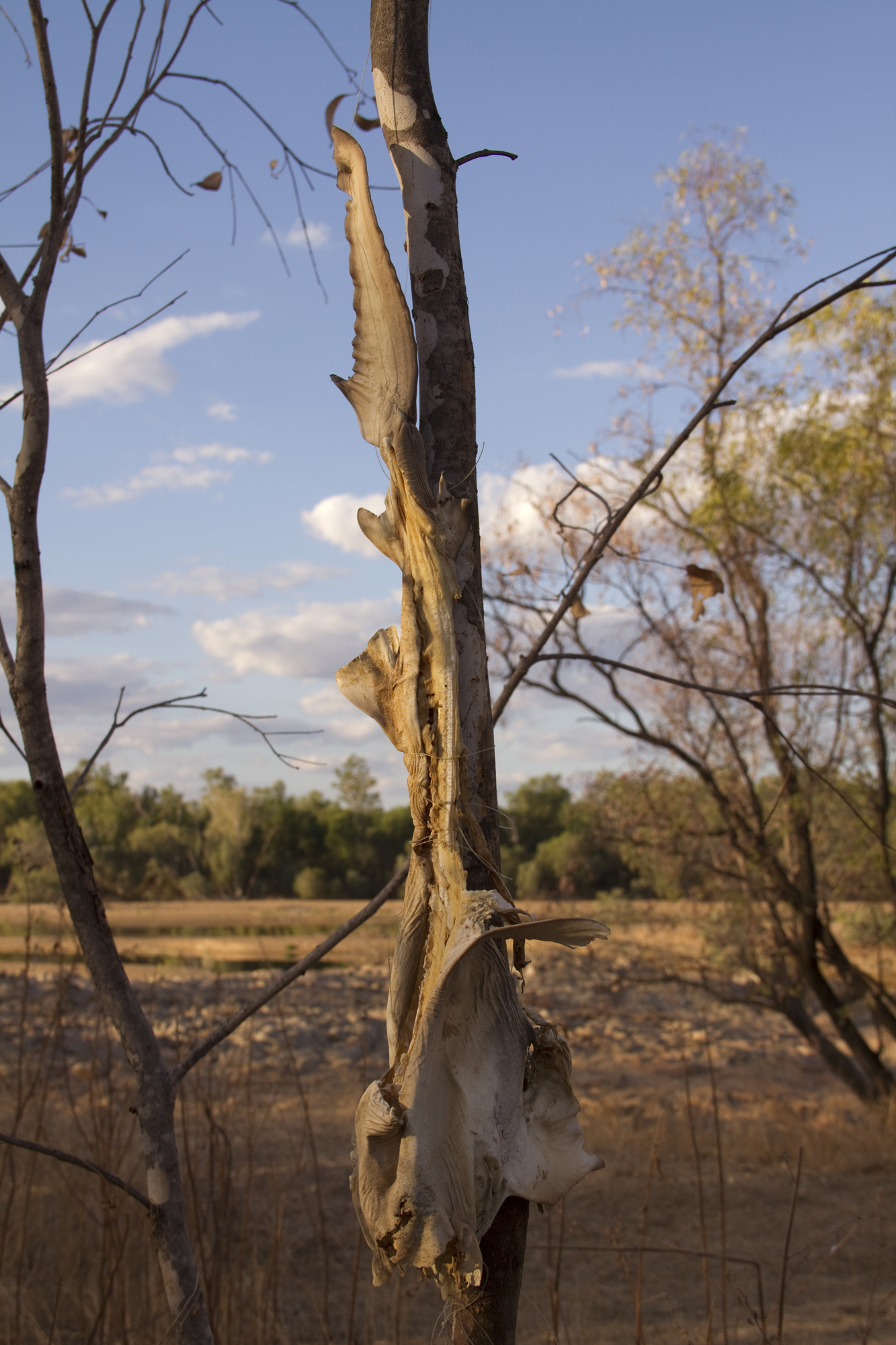
The mummified, incomplete carcass of what was probably a juvenile bull shark hangs from a tree. In the background can be seen the small waterholes that are all that remains of the Mitchell River during the dry season.
In Kowanyama, we received a warm welcome from the local Indigenous Rangers. They provided us with first insights into their ongoing habitat restoration and ecological survey programmes and we discussed the potential of future collaborations for sawfish surveys. Now, while we are working out the details of this collaboration, we eagerly await our return to this beautiful part of the Cape York region and hope to put Kowanyama on the map with sawfish encounters for our research.
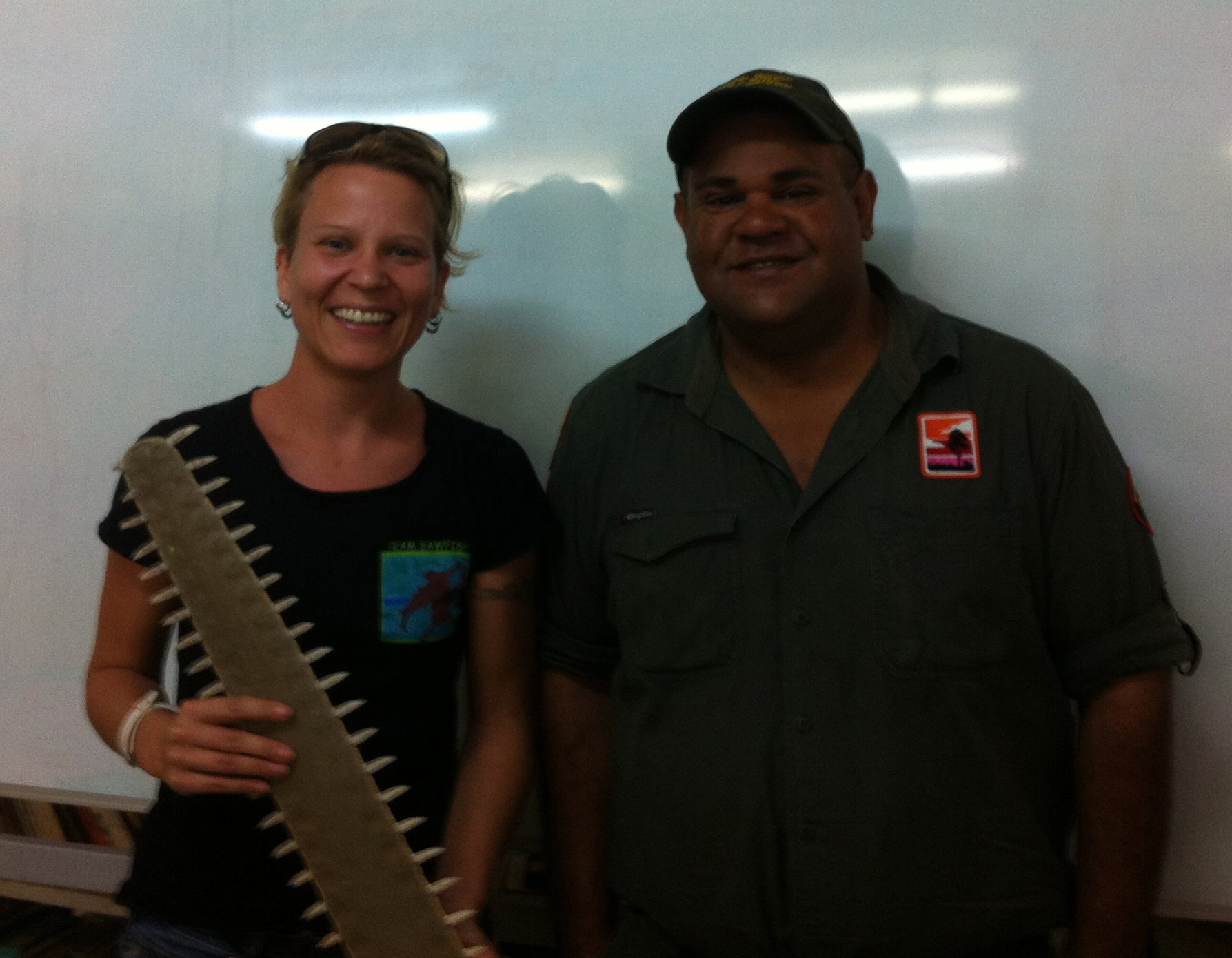
Barbara Wueringer of Sharks and Rays Australia meets Garreth Forrester, the senior ranger of the Kowanyama Indigenous Rangers to discuss collaborative work to tag and release sawfish on the western side of Cape York, Queensland, Australia.
To keep up to date with Sharks and Rays Australia’s research projects, please follow us on Facebook or check out our homepage, where you can also submit sawfish sightings and subscribe to our newsletter.
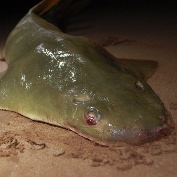
by Barbara | Feb 18, 2016 | Blog |
Read more about our recent paper in the press release by Murdoch University, which is copied below.
http://media.murdoch.edu.au/murdoch-researchers-highlight-the-cruelty-of-amputating-sawfish-rostra
Murdoch researchers highlight the cruelty of amputating sawfish rostra
February 18, 2016

A Green Sawfish with its rostrum amputated (Pic: David Morgan)
The cruel act of amputating distinctive sawfish rostra for trophies should be afforded the same attention as the poaching of body parts from other endangered species like rhinos, a Murdoch University researcher has said.
Associate Professor David Morgan from the Freshwater Fish Group & Fish Health Unit said sawfish protection needed better enforcement globally and the conservation value of sawfish should be actively promoted.
Available evidence suggests sawfish die a lingering death after rostrum removal, he said in an article published in the Fisheries journal.
Their rostra – the chainsaw-shaped extension that distinguishes the fish and gives it its name – are used to sense, forage for and capture their prey of crustaceans and small fish.
“Sawfish forage on the riverbed and sense prey via the electrosensitive pores on their rostra,” explained Dr Barbara Wueringer, who co-authored the study.
“They then slash their rostrums to stun or impale their food. They also use the rostrums to protect themselves from predators.”
Professor Morgan and his team studied the behaviour of a Green Sawfish found in the Ashburton River after its rostrum had been illegally amputated. They tagged it and observed changes in movement patterns and habitat use compared to similarly sized sawfish with rostra intact.
“We found that it ranged more widely, perhaps in order to source ‘easy prey’ or avoid attacks by predators, than other tagged sawfish of a similar size with rostra intact,” he said.
“After 75 days the fish was no longer detected and may have either emigrated outside the detection range or, more likely, it will have perished because emigration occurred infrequently for other tagged sawfish of that size.”
At a later date, Professor Morgan also captured and tagged a Freshwater Sawfish with a partially severed rostrum contained in an isolated freshwater pool in the Fitzroy River.
He said it was severely emaciated and its damaged rostrum had impacted its ability to effectively forage.
“It was detected by our loggers for 10 days and not thereafter. In comparison, two other similarly sized individuals tagged in the same pool at the same time were detected for several months. This supports our assumption that the injured sawfish died in the pool.”
Professor Morgan said the decline of sawfish due to fishing pressure was exacerbated by humans removing sawfish rostra.
“This undoubtedly negatively impacts survival rates of those fish,” he added.
“Most amputations in northern Australia are from the last few decades.
“The few remaining human population centres that have sawfishes inhabiting their local waters must address this destructive phenomenon, and sawfish protection needs better enforcement globally.”
The Fisheries paper can be read here.








